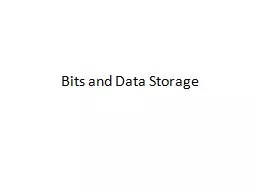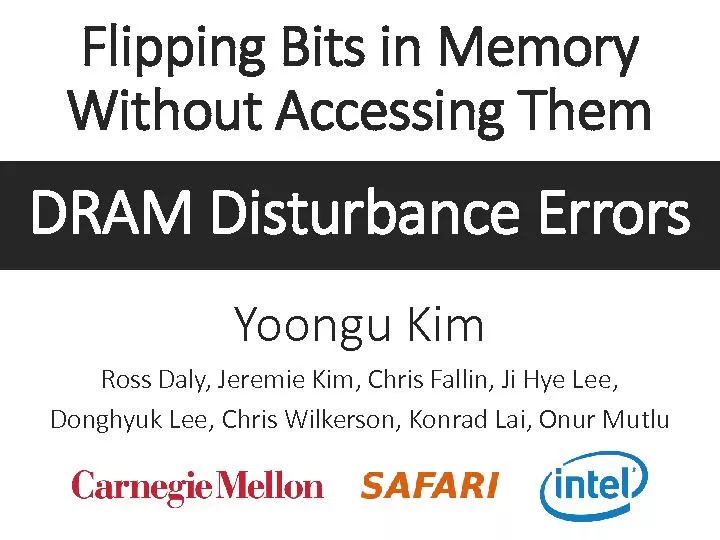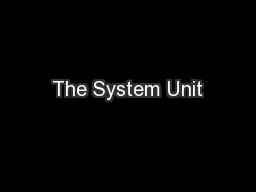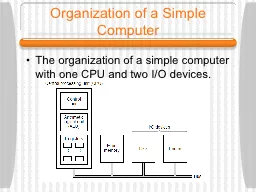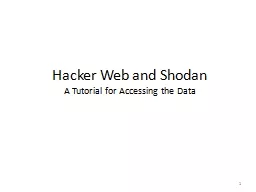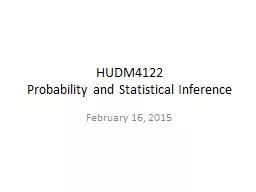PPT-Flipping Bits in Memory Without Accessing Them
Author : pamella-moone | Published Date : 2016-03-26
Yoongu Kim Ross Daly Jeremie Kim Chris Fallin Ji Hye Lee Donghyuk Lee Chris Wilkerson Konrad Lai Onur Mutlu DRAM Disturbance Errors DRAM Chip Row of Cells Row Row
Presentation Embed Code
Download Presentation
Download Presentation The PPT/PDF document "Flipping Bits in Memory Without Accessin..." is the property of its rightful owner. Permission is granted to download and print the materials on this website for personal, non-commercial use only, and to display it on your personal computer provided you do not modify the materials and that you retain all copyright notices contained in the materials. By downloading content from our website, you accept the terms of this agreement.
Flipping Bits in Memory Without Accessing Them: Transcript
Download Rules Of Document
"Flipping Bits in Memory Without Accessing Them"The content belongs to its owner. You may download and print it for personal use, without modification, and keep all copyright notices. By downloading, you agree to these terms.
Related Documents


